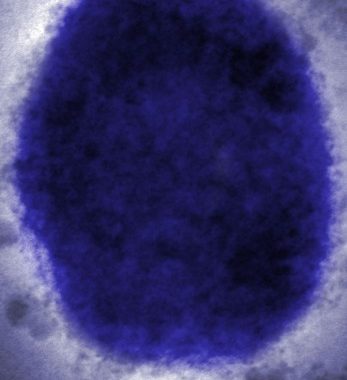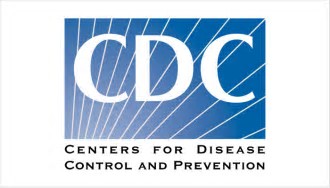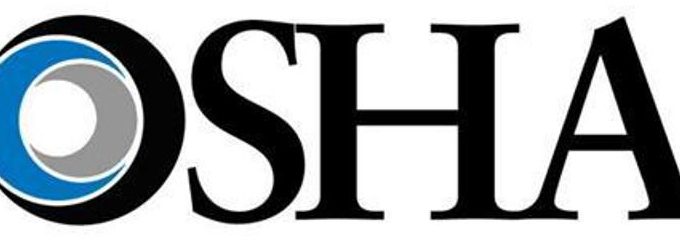The US Occupational Safety and Health Administration (OSHA) has specific requirements for sharps containers in…

CDC Posts Monkeypox Virus Guidance, Resources
 In response to growing alarm surrounding the monkeypox virus, the U.S. Centers for Disease Control and Prevention (CDC) launched an informational website covering monkeypox, as well as posted online resources about the virus, including information for clinicians and FAQs.
In response to growing alarm surrounding the monkeypox virus, the U.S. Centers for Disease Control and Prevention (CDC) launched an informational website covering monkeypox, as well as posted online resources about the virus, including information for clinicians and FAQs.
What is Monkeypox?
Monkeypox is a rare disease that is caused by infection with the monkeypox virus, a virus belonging to the Orthopoxvirus genus, which includes the variola (smallpox) virus. Monkeypox is of public health concern because the illness is similar to smallpox and can be spread from infected humans, animals, and materials contaminated with the virus. Monkeypox is less transmissible and usually less severe than smallpox. Monkeypox is not related to chickenpox.
Monkeypox was first identified in 1958 and occurs primarily in Central and West African countries. Historically, monkeypox cases have rarely occurred in the U.S. and had mostly been related to international travel or importation of animals. There is a recent significant increase in reported cases where monkeypox is not commonly seen, including in Europe, Canada, and the United States. While it’s good to stay alert about any emerging public health outbreaks, the current risk of getting monkeypox in the general public is very low.
Symptoms
Monkeypox often starts with flu-like symptoms, with fever, low energy, headache, swollen lymph nodes, and general body aches. Within 1 to 3 days (sometimes longer) after the appearance of fever, the person usually develops a rash or sores. The sores will go through several stages, including scabs, before healing. They can look like pimples or blisters and may be painful and itchy. The rash or sores may be found all over the body such as the hands, feet, chest, genitals, and face. They may also be limited to one part of the body.
People with monkeypox may experience all or only a few of these symptoms. Most with monkeypox will develop the rash or sores. Some people have reported developing a rash or sores before (or without) the flu-like symptoms.
Transmission
Monkeypox can spread to anyone through close, personal, often skin-to-skin contact.
- Direct contact with monkeypox rash, scabs, or body fluids from a person with monkeypox.
- Touching objects, fabrics (clothing, bedding, or towels), and surfaces that have been used by someone with monkeypox.
- Contact with respiratory secretions through prolonged face-to-face interactions (the type that mainly happen when living with someone or caring for someone who has monkeypox).
- A pregnant person can spread the virus to their fetus through the placenta.
A person with monkeypox can spread it to others from the time symptoms start until the rash has fully healed and a fresh layer of skin has formed. The illness typically lasts 2-4 weeks.
Monkeypox is NOT spread through casual brief conversations or walking by someone with monkeypox, like in a grocery store.
Prevention
There are number of ways to prevent the spread of monkeypox, including:
- Avoid close, skin-to-skin contact with people who have a rash that looks like monkeypox.
- Avoid contact with objects and materials that a person with monkeypox has used.
- Wash your hands often with soap and water or use an alcohol-based hand sanitizer, especially before eating or touching your face and after you use the bathroom.
For DHCP: DHCP should follow standard precautions, according to CDC guidelines, in the care of all patients. Additionally, DHCP should screen patients for illnesses, such as monkeypox, at reception, and should defer treatment if patients are symptomatic
Vaccination
Vaccination helps to protect against monkeypox when given before or shortly after an exposure. Monkeypox vaccine is licensed for adults 18 years and over. It is administered as a two dose injection series in the upper arm at least four weeks apart. Most people who receive the vaccine have only minor reactions such as pain, redness, swelling and itching at the injection site. Less commonly, people also may experience muscle pain, headache, fatigue (tiredness), nausea, chills, and fever.
Vaccination for DHCP?
 The CDC does not currently recommend pre-exposure vaccination for most U.S. healthcare workers, including dental healthcare personnel (DHCP). Monkeypox primarily spreads through close contact and does not spread as easily as diseases like COVID-19. Proper infection control practices, including use of personal protective equipment (PPE), are effective at reducing the risk of transmission of the monkeypox virus when examining an asymptomatic patient or handling potentially contaminated materials. The risk of monkeypox for most front-line healthcare workers is low.
The CDC does not currently recommend pre-exposure vaccination for most U.S. healthcare workers, including dental healthcare personnel (DHCP). Monkeypox primarily spreads through close contact and does not spread as easily as diseases like COVID-19. Proper infection control practices, including use of personal protective equipment (PPE), are effective at reducing the risk of transmission of the monkeypox virus when examining an asymptomatic patient or handling potentially contaminated materials. The risk of monkeypox for most front-line healthcare workers is low.
Post-exposure prophylaxis (PEP) against monkeypox is indicated for potentially exposed healthcare workers, and is most effective at preventing monkeypox if the vaccine is administered within 4 days of exposure. If given between 4–14 days after the date of exposure, vaccination may help reduce symptoms, but may not prevent the infection from developing.
Since 1992, OSHA Review, Inc. has provided dental professionals with comprehensive programs to support regulatory compliance and infection control. We are a registered continuing education provider in the state of California, specializing in Dental Practice Act, infection control, and OSHA training.


